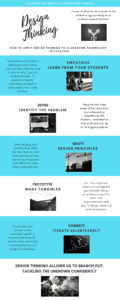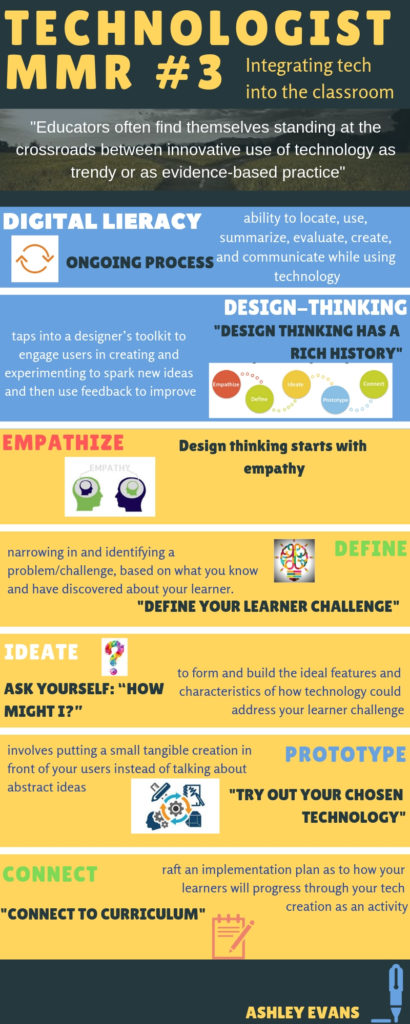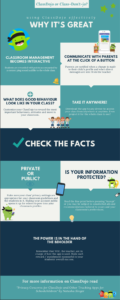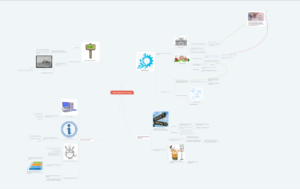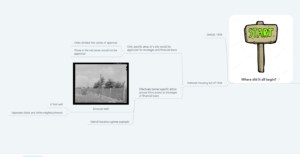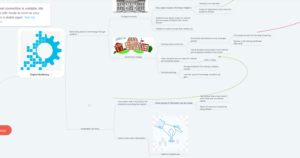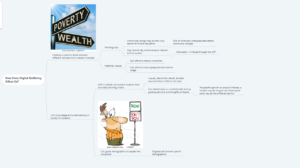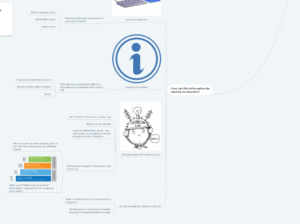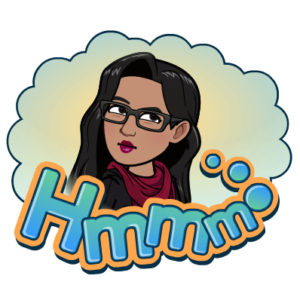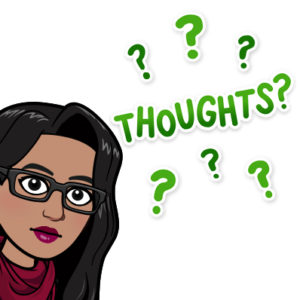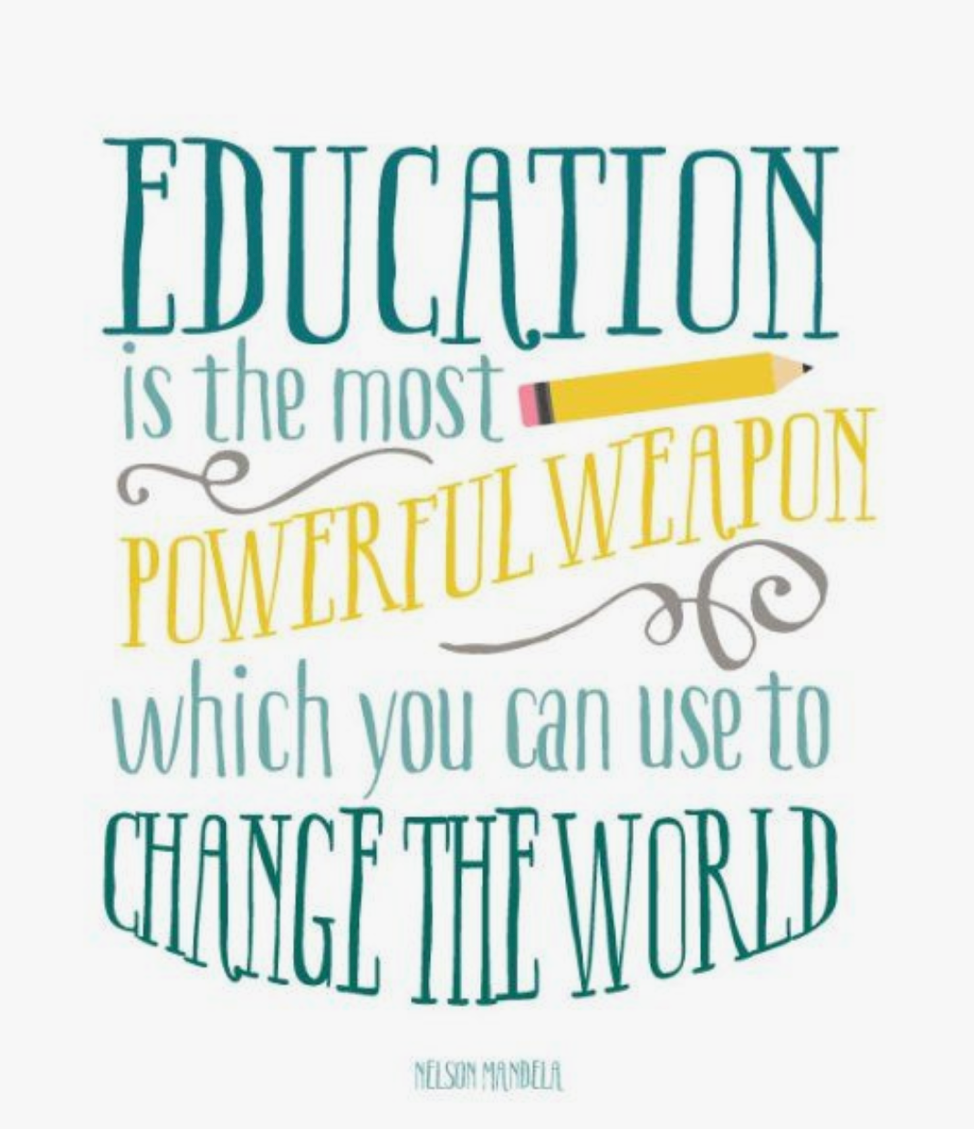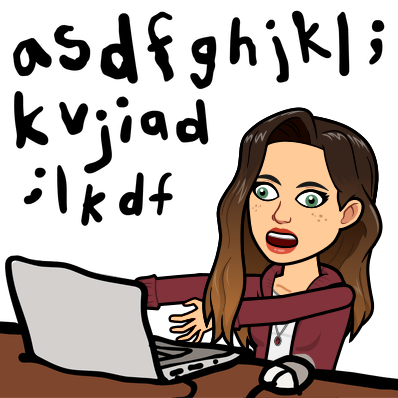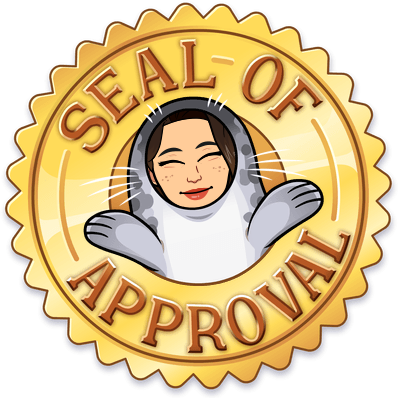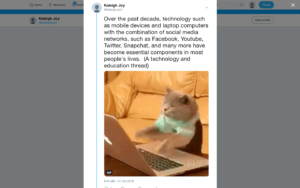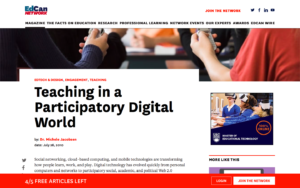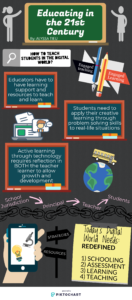After working through eCampus Ontario’s Technologist Module in class and further on my own time, I choose to visually represent my ideas in the form of an Infographic. I consider myself to be more creative rather than artistic so I enjoy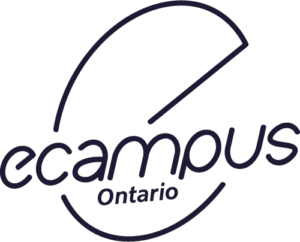 using the templates provided by Canva. These templates allow me just enough artistic freedom to make my own unique artifact but not enough that I am liable to screw anything up. I liked the idea of posing a question to readers when they look at my Infographic and then going on to explain the possible answers to that question while still allowing the readers to formulate their own opinions. As educators many of us may have different comfort levels and attitudes when it comes to technology integration versus traditional tried and practiced teacher centered strategies. I, however, am very open to the integration of technology in the classroom and think I framed my Infographic in a way that got that message across.
using the templates provided by Canva. These templates allow me just enough artistic freedom to make my own unique artifact but not enough that I am liable to screw anything up. I liked the idea of posing a question to readers when they look at my Infographic and then going on to explain the possible answers to that question while still allowing the readers to formulate their own opinions. As educators many of us may have different comfort levels and attitudes when it comes to technology integration versus traditional tried and practiced teacher centered strategies. I, however, am very open to the integration of technology in the classroom and think I framed my Infographic in a way that got that message across.
The Technologist Module did an excellent job of outlining steps to use when contemplating technology integration into the classroom. The creators of the module essentially asked, “Are you stuck between deciding if using innovative technology or evidence based is best?” then went on to provide a process for determining if technology integration is the best option for you. The creators of this module suggested using Design Thinking, which is a solution based approach to solving small problems on route to solving the much bigger more complex problems. The five steps to Design Thinking are empathize, define, ideate, prototype and connect. During the first step teachers need to take the time to learn from their students to determine what is trul y needed. Learning about what excites students, what they love to do and what they’re afraid of will help determine what the problem really is and is the first step to the solution. During the define stage teachers need to use their intuition to make sense of the information they’ve learned through conversations with their students. In the next stage it’s important to start building and forming ideas of what the ideal features and characteristics of how technology integration may solve your problem. This is also the stage where you may determine that technology integration isn’t the answer or that you may need to dig deeper into framing the problem. In the prototype stage asking “how might we?” questions will help to bridge the gap between design principles and specific ideas, using play and experimentation while designing, sharing and refining prototypes will help with this process. The final stage of Design Thinking is to connect. This is the time to connect to the curriculum, speak to teachers and students and remember to never stop trying to improve when it comes to integrating technology into your classroom.
y needed. Learning about what excites students, what they love to do and what they’re afraid of will help determine what the problem really is and is the first step to the solution. During the define stage teachers need to use their intuition to make sense of the information they’ve learned through conversations with their students. In the next stage it’s important to start building and forming ideas of what the ideal features and characteristics of how technology integration may solve your problem. This is also the stage where you may determine that technology integration isn’t the answer or that you may need to dig deeper into framing the problem. In the prototype stage asking “how might we?” questions will help to bridge the gap between design principles and specific ideas, using play and experimentation while designing, sharing and refining prototypes will help with this process. The final stage of Design Thinking is to connect. This is the time to connect to the curriculum, speak to teachers and students and remember to never stop trying to improve when it comes to integrating technology into your classroom.
During each of my practicum placements I’ve struggled with making the choice between whether it was appropriate to integrate technology into my lessons or if another approach would be best suited for those particular situations. Knowing about Design Thinking and the process proposed by the Technologist Module would have helped to make those decisions and not leave me second guessing myself. As a new teacher who is relatively new to bringing technology in the classroom often times my technology integration was doing nothing to elevate my lessons,  instead I was simply using technology as a tool substitution but not making any functional changes to the lesson. As someone who is going to be a physical education teacher I am always trying to think of ways to reach learners of all styles in the gym which at times can be even more difficult when in the classroom. When asked to complete a task such as hitting a baseball some students may need a different type of instruction to succeed than the conventional methods. Using Design Thinking I would have a conversation with my students and learn that they really enjoy watching video of professional athletes and that just being told how to do something isn’t the way they learn best. I would then come to the conclusion that my problem to solve may be how do I incorporate technology into my class to teach my students how to hit a baseball. Working through the next phases of the decision making process I would come to the conclusion that redefining my lesson using technology integration would help my students immensely. I could have my students watch video examples, practice the technique and then video tape the students hitting balls which would allow me to give feedback about their technique.
instead I was simply using technology as a tool substitution but not making any functional changes to the lesson. As someone who is going to be a physical education teacher I am always trying to think of ways to reach learners of all styles in the gym which at times can be even more difficult when in the classroom. When asked to complete a task such as hitting a baseball some students may need a different type of instruction to succeed than the conventional methods. Using Design Thinking I would have a conversation with my students and learn that they really enjoy watching video of professional athletes and that just being told how to do something isn’t the way they learn best. I would then come to the conclusion that my problem to solve may be how do I incorporate technology into my class to teach my students how to hit a baseball. Working through the next phases of the decision making process I would come to the conclusion that redefining my lesson using technology integration would help my students immensely. I could have my students watch video examples, practice the technique and then video tape the students hitting balls which would allow me to give feedback about their technique.
Hope you enjoy my Infographic! If the thumbnail below is too hard to read here’s a link to the PDF file. Multimedia Artifact (PDF)
Christine
